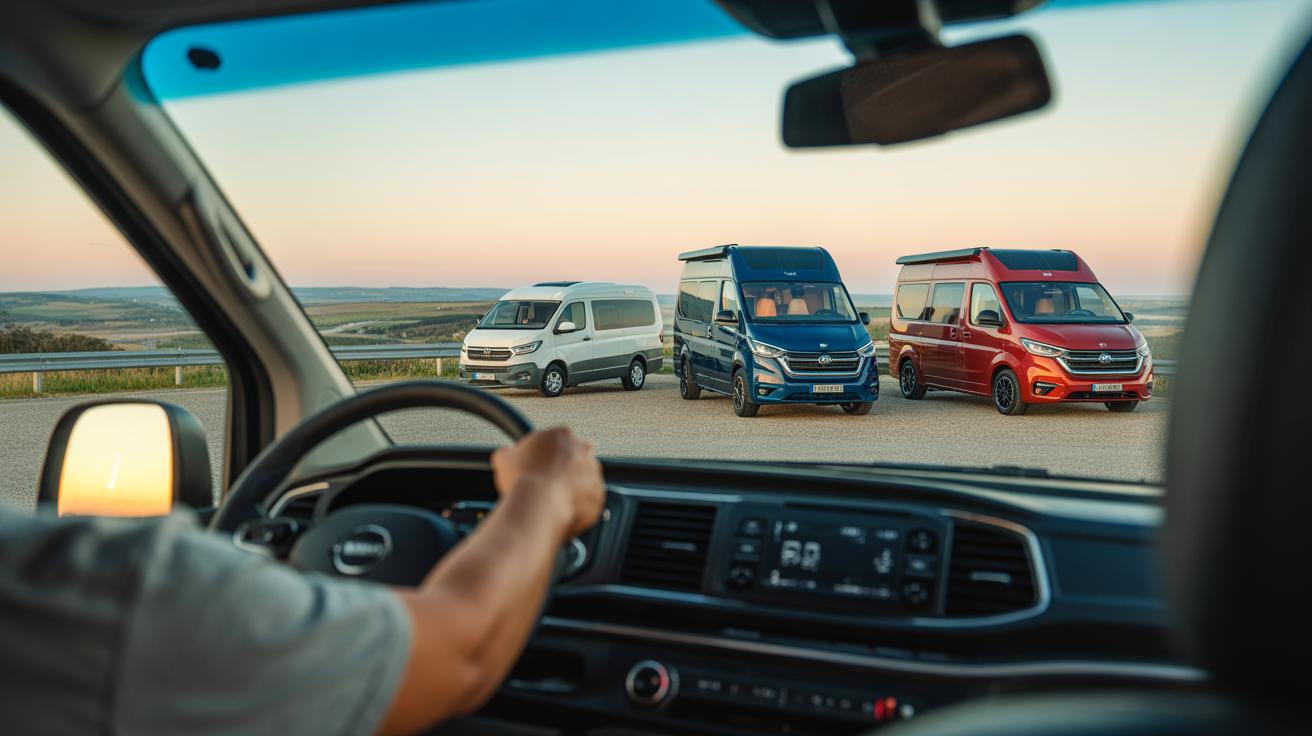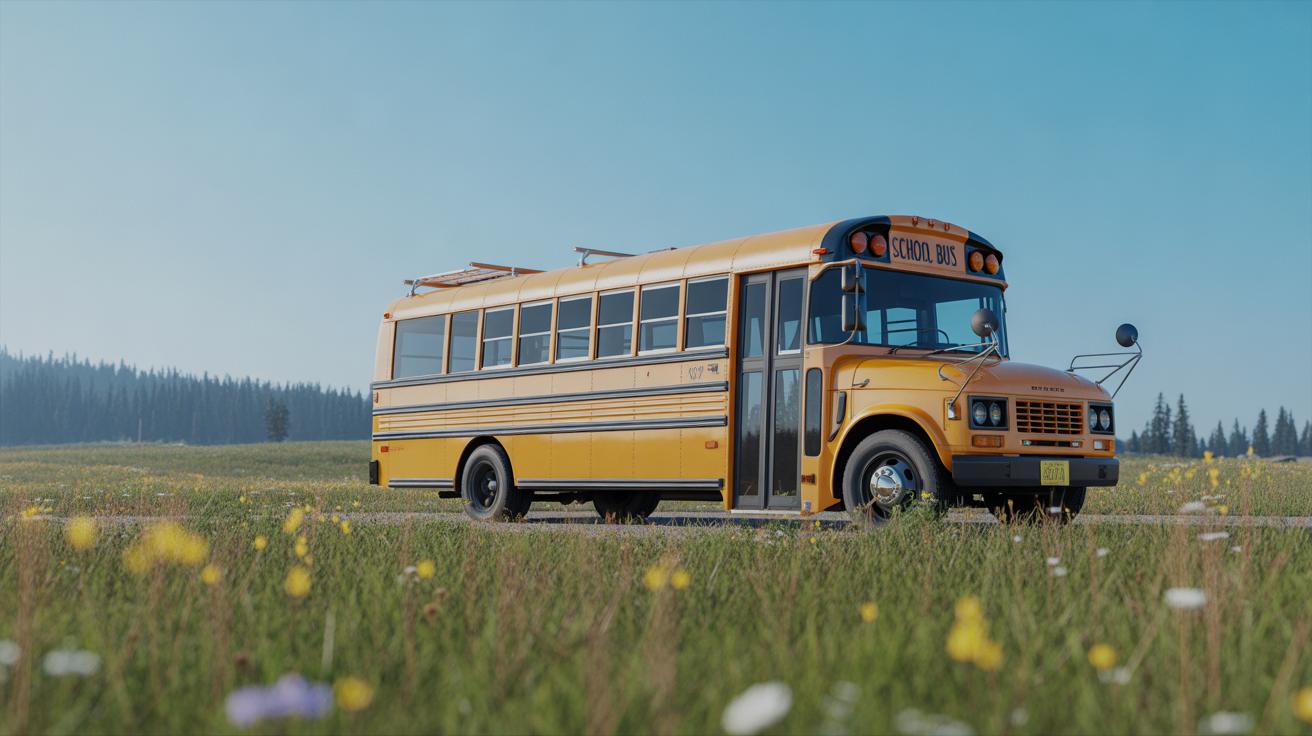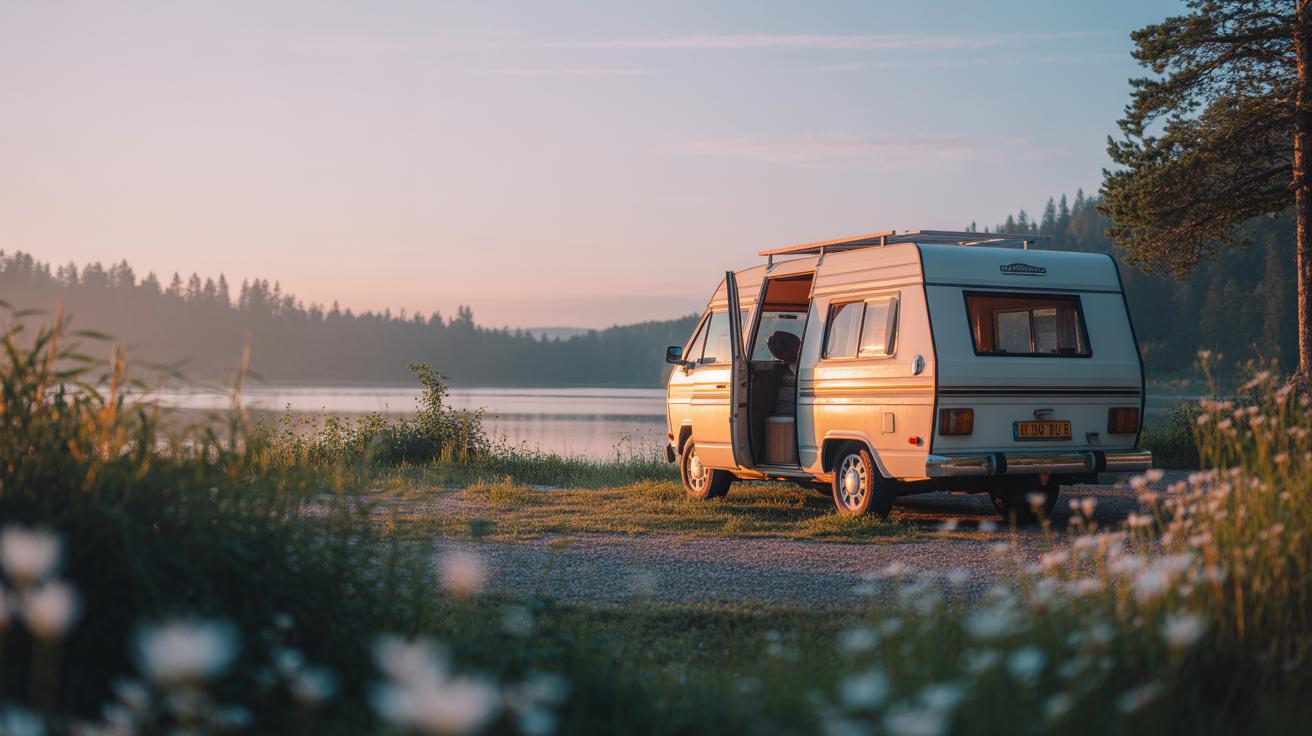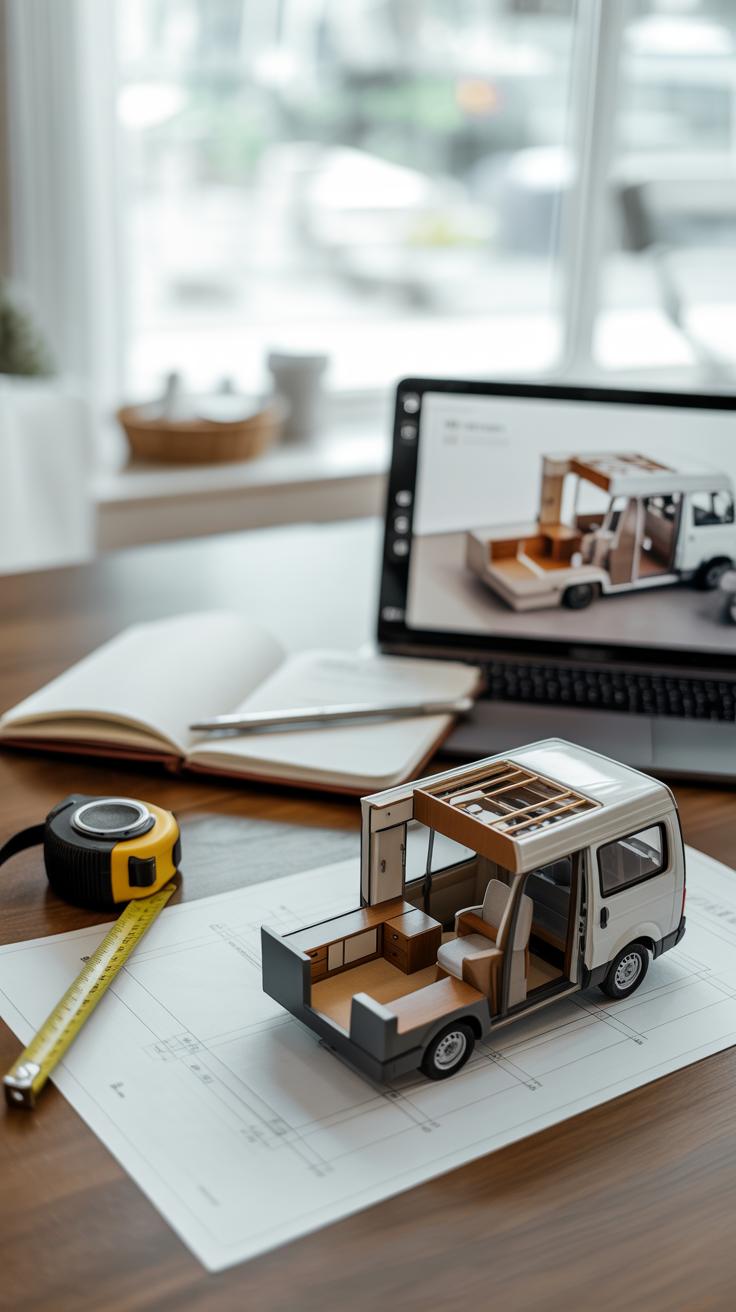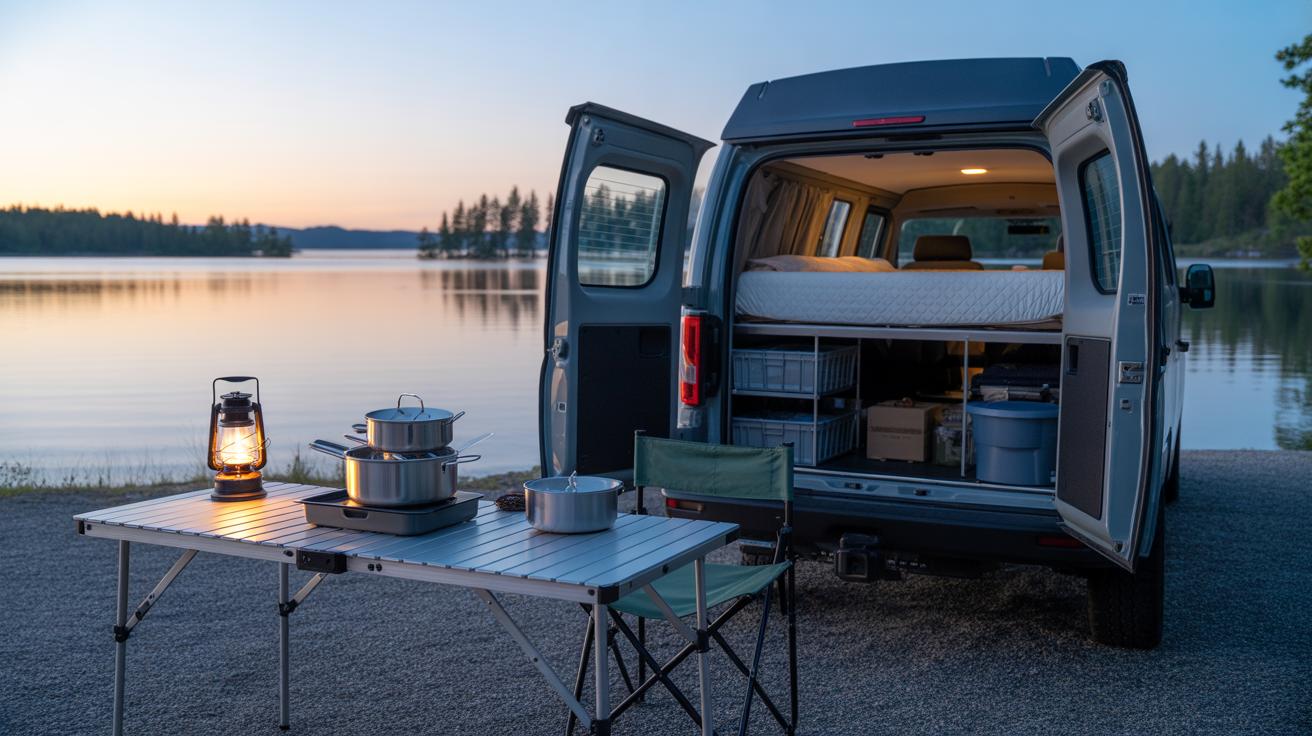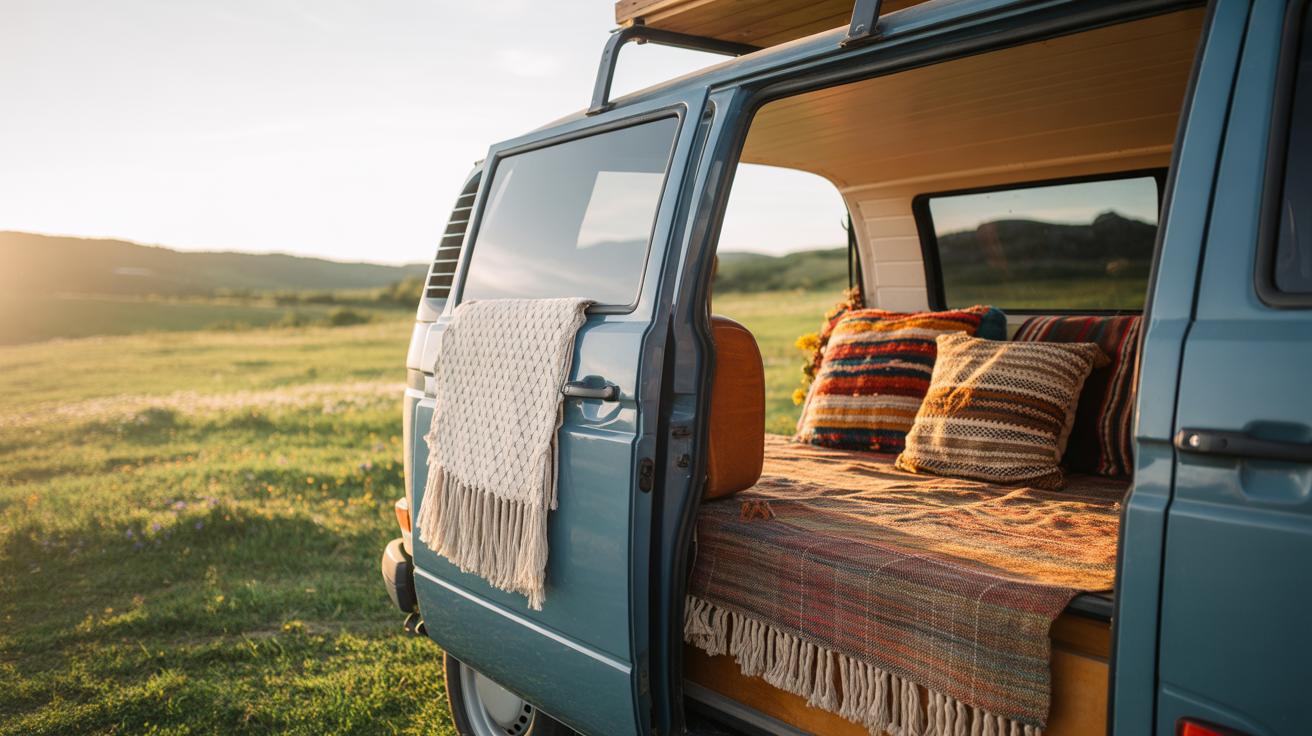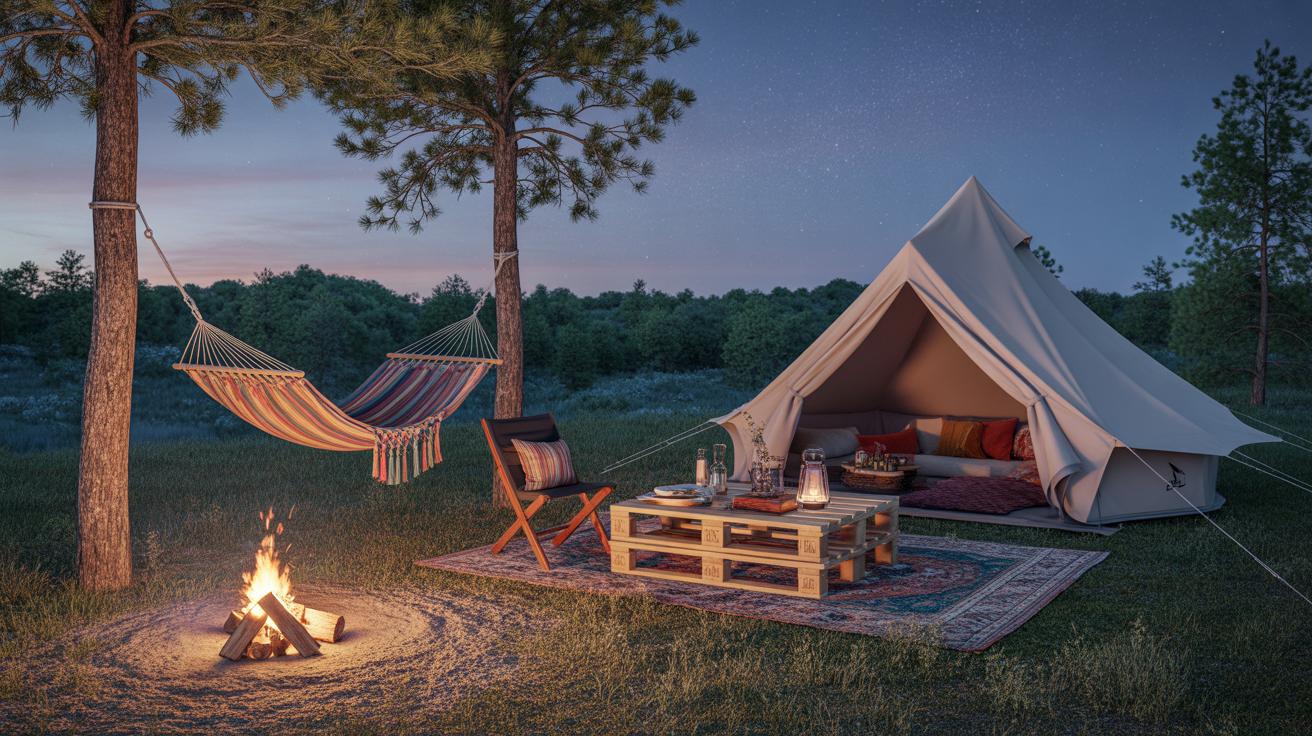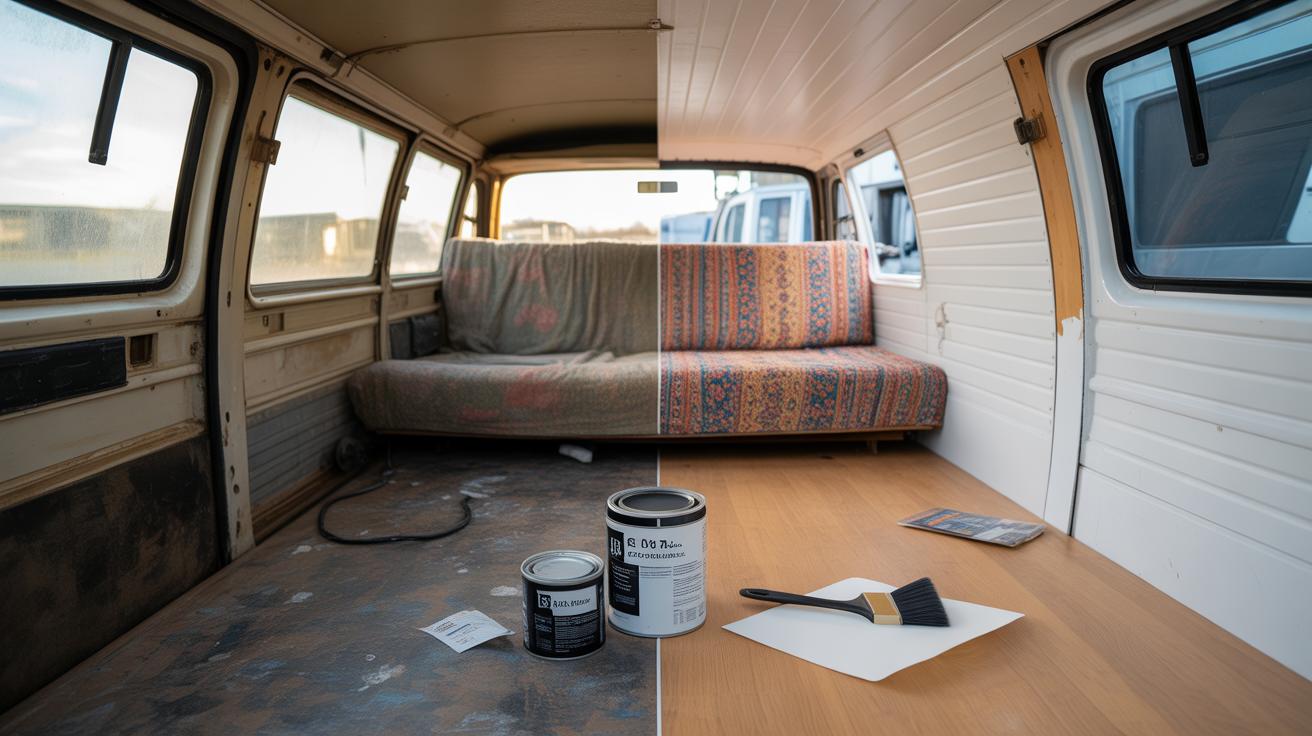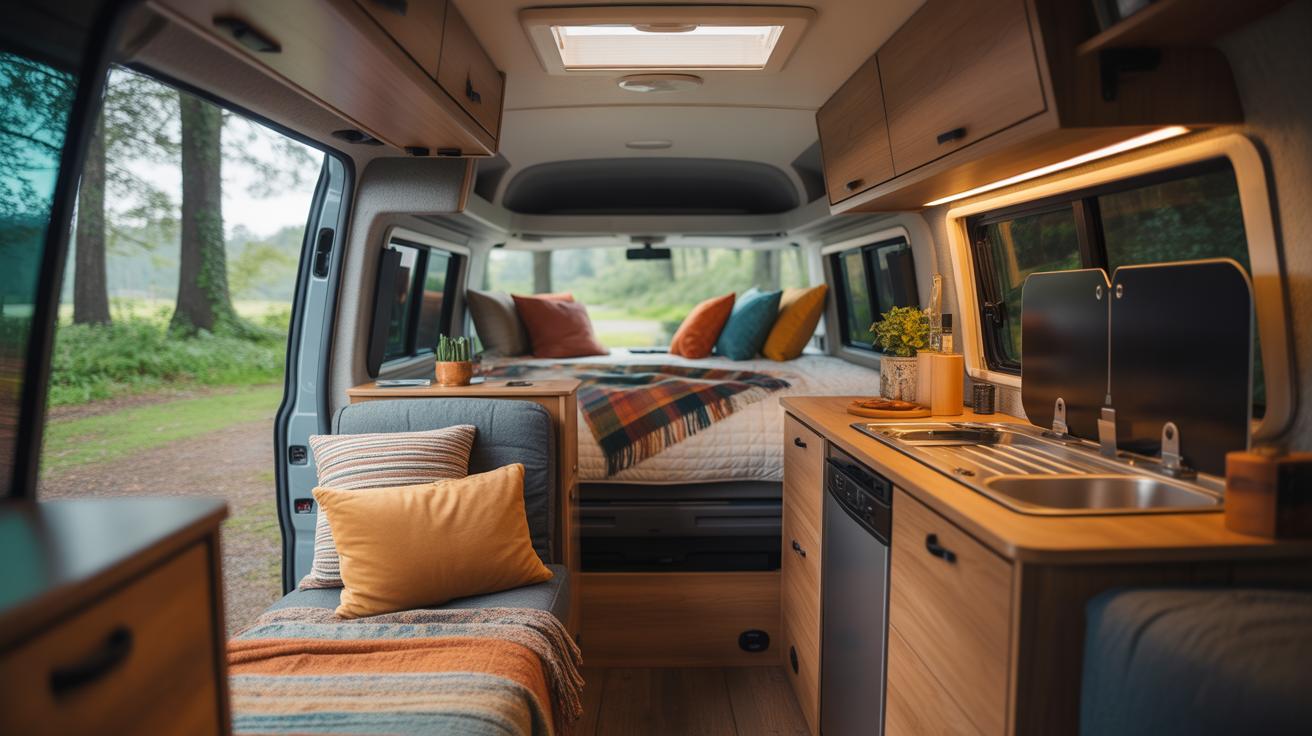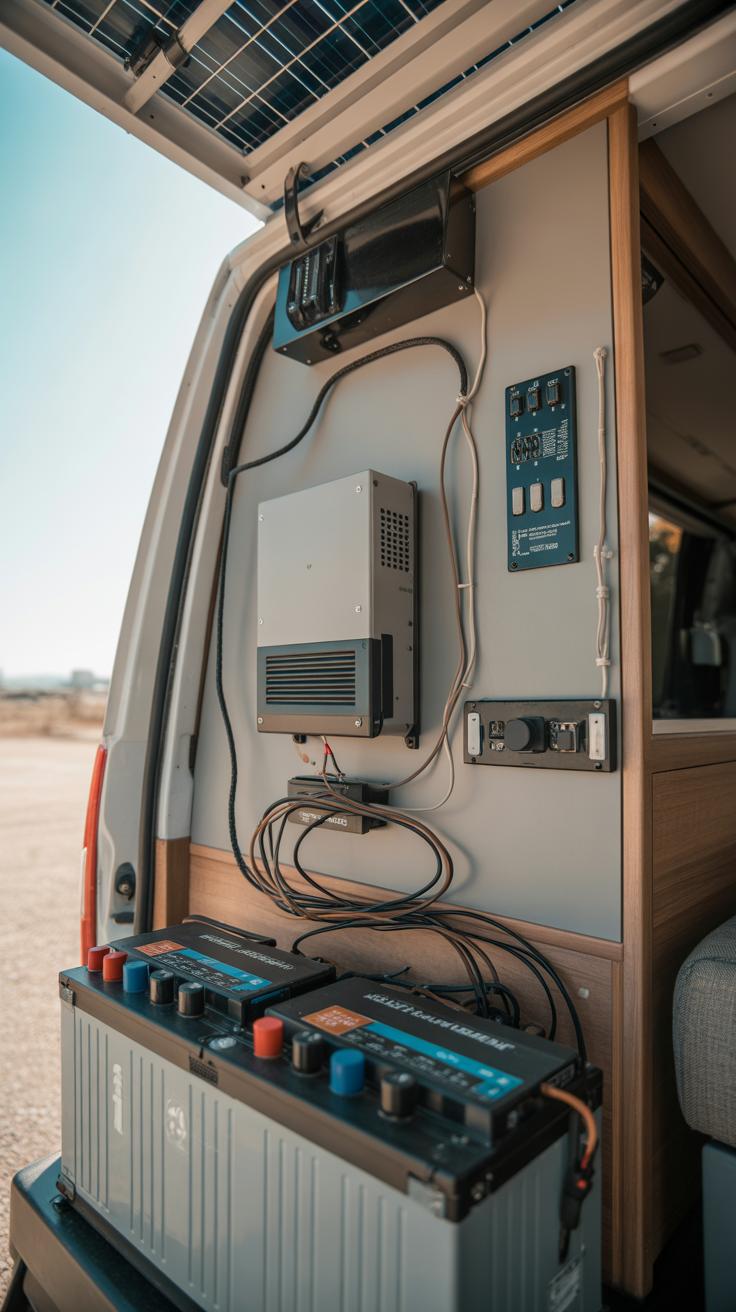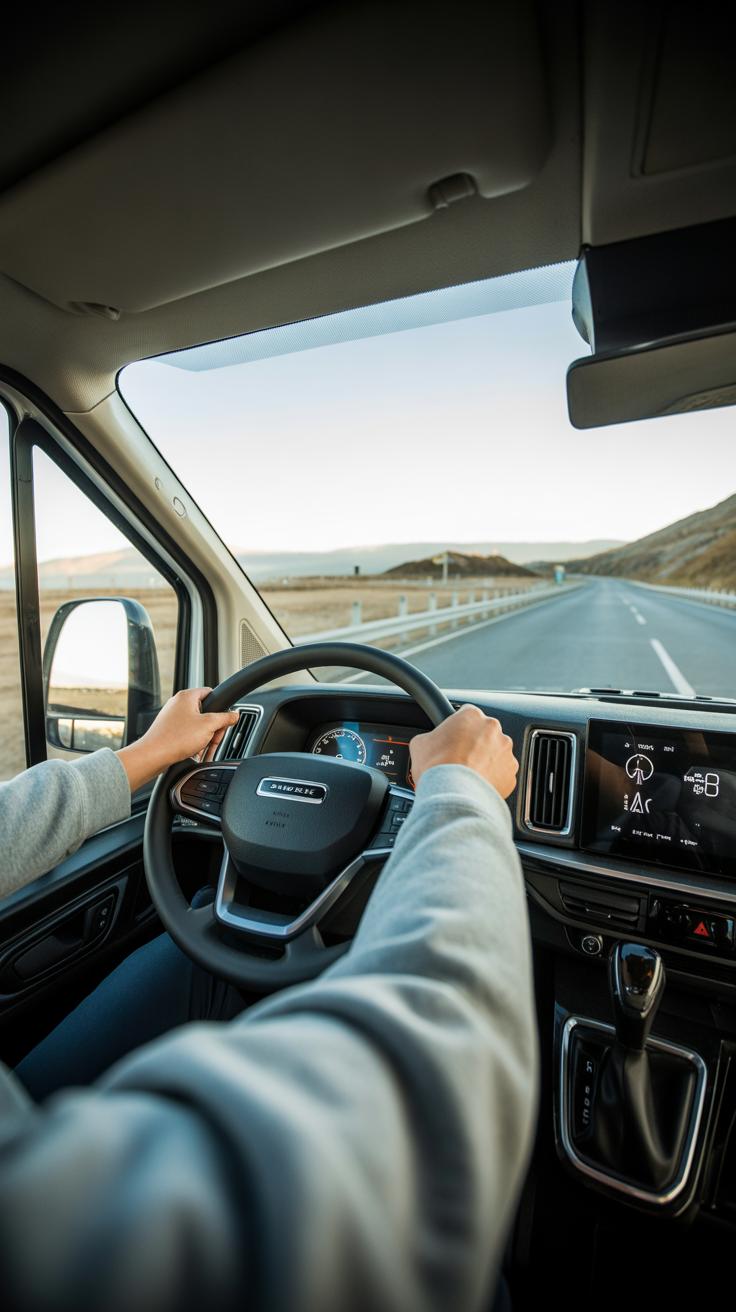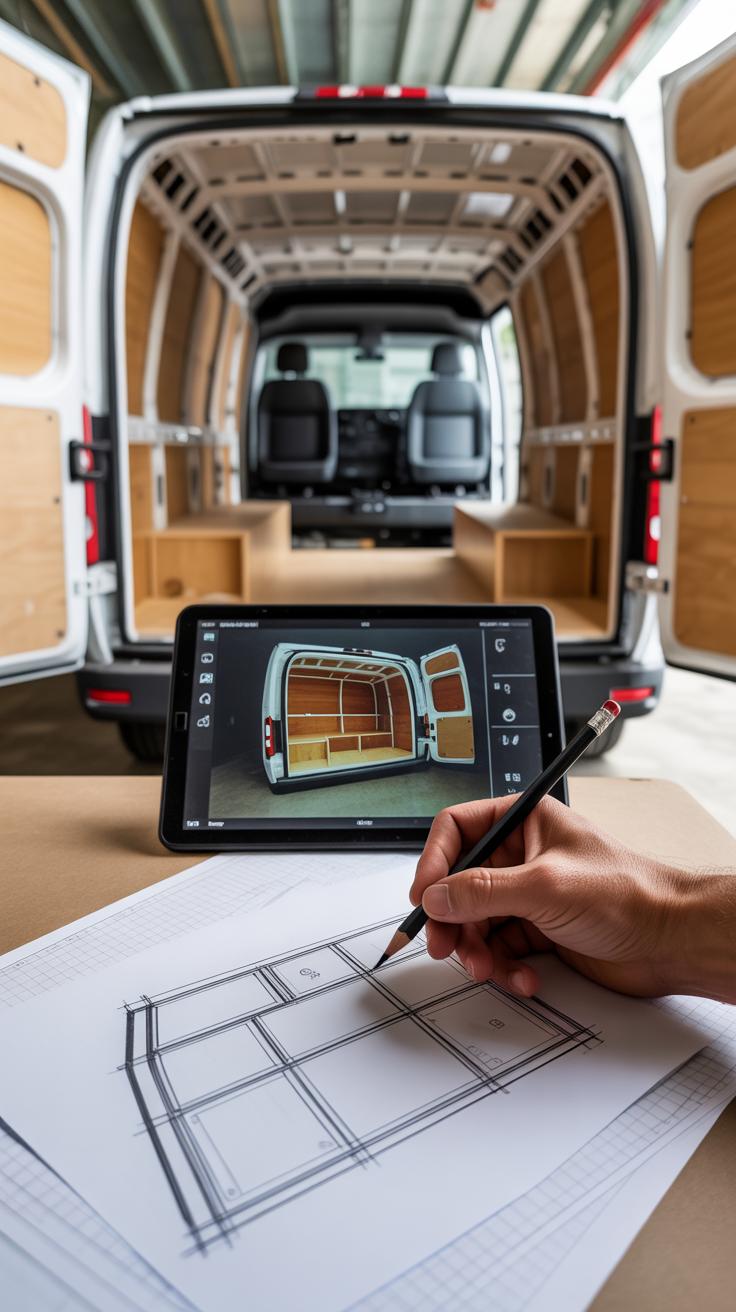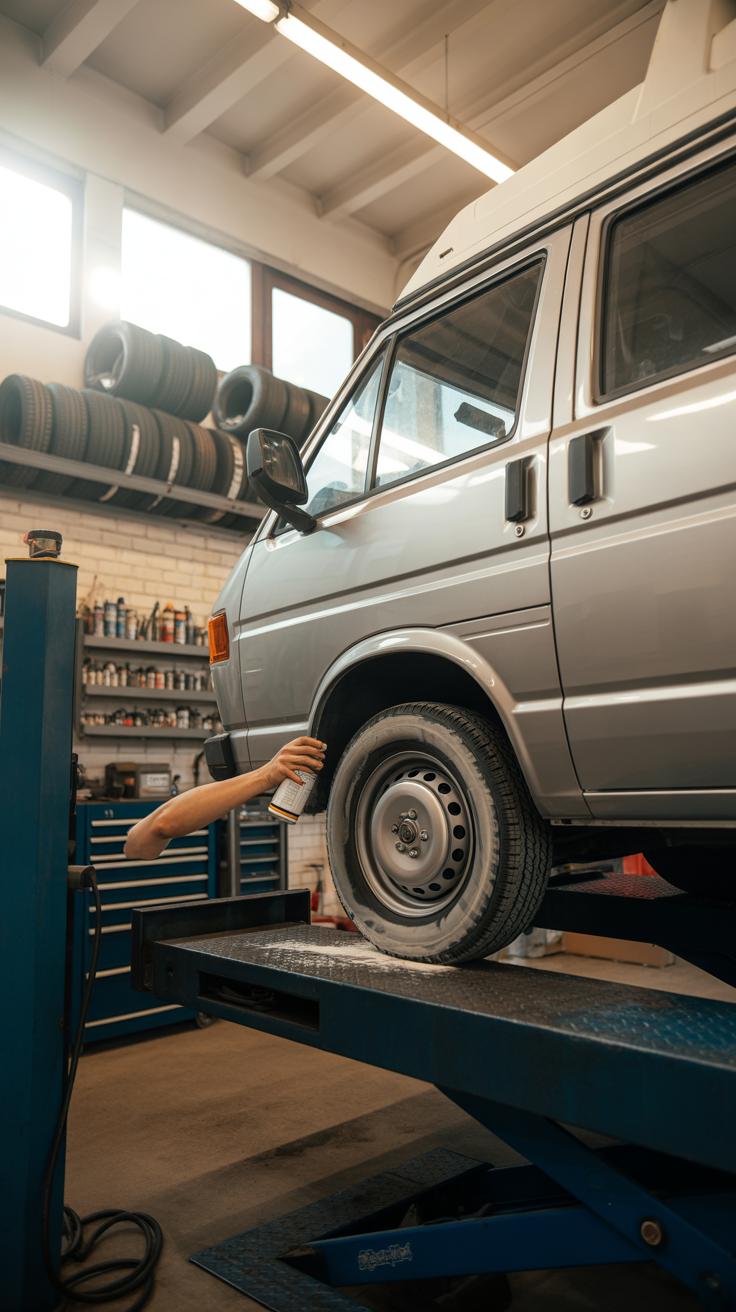Introduction
Choosing the perfect travel van for your next journey sets the foundation for memorable adventures. Travel vans offer flexible transport and living space, allowing you the freedom to explore without limits. But with various types and features, deciding on the ideal model can feel challenging.
This article helps you understand what to look for in a travel van. It walks you through important aspects like size, comfort, and amenities. You will find practical advice and examples to help you make a choice that fits your travel style and budget. Let’s explore together how to pick the right travel van for your adventures.
Understanding Different Types Of Travel Vans
When you start looking at travel vans, you quickly notice there’s more variety than you might expect. The basic categories usually break down into conversion vans, campervans, and high-top vans. Each of these serves a somewhat different purpose, though they overlap at times, which can make choosing tricky.
Conversion vans are usually full-sized vans that someone has customized inside for travel—think seats swapped out for beds, added storage, maybe even a mini kitchen. High-top vans simply add extra height to the roof, so you can stand up inside, which is a big plus for comfort on longer trips. Campervans generally come ready-made or thoughtfully designed for both driving and sleeping but are often smaller and more nimble than full motorhomes.
So, what might suit you? If you want something spacious but still drivable in urban settings, a high-top or conversion van could work. Campervans feel a little more compact and practical. What kinds of trips do you envision? That’s usually a good place to start.
Features Of Conversion Vans
Conversion vans started becoming popular decades ago, originally as a way to make large vans more comfortable for families or road trips. Over time, people turned them into rolling homes, outfitting them with beds, small kitchens, and storage cubbies. The hallmark feature here is often a pop-top roof—basically, a section that lifts up to give you more headroom. It’s a clever trick that lets you keep the van’s sleek exterior but open up the space inside when parked.
Inside, these vans can range from very basic—just a bed and some curtains—to elaborate setups with LED lighting, insulated walls, and fold-out tables. Many drivers appreciate that conversion vans strike a balance between comfort and driving ease; they’re easier to handle than a larger RV yet more spacious than a regular cargo van.
What Makes Campervans Unique
Campervans stick closer to the original van body but are specifically crafted for transport along with a sleeping area. Unlike bigger motorhomes, campervans focus more on compact living. They typically have built-in beds that fold or convert into seats, small kitchenettes, and minimal storage solutions—all designed to fit into a smaller footprint. This means you can park in tighter spots and drive through narrower roads, which can be especially handy if your next destination is a bit off the beaten path.
While you don’t get the separate bathroom or large kitchen that a motorhome offers, campervans often feel more connected to the road and give a kind of freedom that bigger vehicles don’t. If you want something that’s primarily a vehicle first, with comfortable sleeping second, campervans are probably closer to what you need.
When thinking about these options, it’s helpful to ask yourself—are you prioritizing space and home-like amenities, or the freedom to maneuver and park easily? Often, it’s hard to get both perfectly.
Evaluating Your Space For Travel Van Size
When deciding on the size of your travel van, start by thinking about how many people will regularly travel with you. A solo traveler or couple can get by comfortably with a smaller van, but once you add more passengers, especially kids or pets, space demands grow fast.
Consider your planned route and destinations too. Will you mostly stay in campgrounds with full hookups, or do you want to boondock in remote spots? More rugged, off-grid trips often call for compact vans that can squeeze into tight spaces, while longer stays might need extra room for living and gear.
Ask yourself: How much storage do you really need? Some people live minimally and can pack light, while others insist on bringing everything but the kitchen sink. Think about your hobbies, gear, and whether you’ll work remotely—that can impact space requirements in unexpected ways.
Remember, bigger vans provide more comfort but aren’t always easier to handle. Smaller vans might feel cramped initially, but they often maneuver better and cost less fuel. It’s a tricky balance.
Look inside potential vans to see how space flows—not just square footage, but how it feels living day-to-day. Often, cleverly designed small spaces rival larger, cluttered ones for comfort.
Balancing Size And Mobility
Larger vans offer more room for living, sleeping, and storage but come with drawbacks. They can be tough to park in city areas or tight campsites. Plus, they tend to guzzle more fuel. Driving in narrow or winding roads may become stressful.
Smaller vans, on the other hand, excel at mobility and fuel economy. They slip into parking spots easily and feel less intimidating behind the wheel. Yet, cramped quarters might lead to frustration if you’re spending weeks inside. You’ll likely sacrifice storage and sometimes comfort.
It’s a trade-off: Would you prefer a spacious home or a nimble vehicle? Maybe a medium size strikes the right middle ground for your style.
Storage Needs For Extended Trips
Longer journeys demand smart storage solutions. Vans can’t expand like traditional RVs, so you’ll want to optimize every nook. Think vertical storage—overhead cabinets, under-seat drawers, and wall organizers.
Break down your gear into essentials and extras. Some items can stay packed until needed; others need easy access. For example, cooking utensils should be within reach, but winter gear might pack away.
Consider modular storage systems that adapt as you change routes or seasons. A drawer that slides out or bins tucked under the bed can keep clutter down and your space breathable.
Planning storage often feels overwhelming, but getting it right means less time digging through bags and more time enjoying the trip. You might find you need less than expected once you hit the road.
Prioritizing Comfort Features In Your Travel Van
Comfort is often what makes or breaks your travel experience in a van. The seating matters a lot—not just where you sit while driving, but also spots where you relax or work. Think about seats that can swivel, recline, or maybe even add some cushions. Sometimes a firm seat feels better after a long day; other times you want softer padding. It depends on how you travel and what you prefer.
Sleeping arrangements need more thought than you might expect. Plenty of vans use fold-out sofas, convertible benches, or fixed beds. Each has its ups and downs. Fixed beds offer consistency—you don’t have to rearrange anything, which can be a relief when you’re tired. On the other hand, convertible setups save space, letting you use the area for multiple purposes during the day. But is that worth the hassle of making and breaking down your bed every night? You decide.
When thinking of beds, consider mattress thickness and materials. Memory foam can be great for comfort but might be too warm in summer or too firm for some. One friend I know added a topper over the van foam mattress, which helped a lot. So, test your setup if you can—sleep quality is key.
Climate control simply changes your whole experience, especially in places where temperatures swing widely. Some vans have built-in heaters or air conditioning; others rely on portable units. You might think a fan alone works well, but think about cold mornings or humid nights—it can get tricky. Heating options like diesel or propane heaters are common and offer steady warmth but require ventilation and care. Cooling can be electric or passive through vents and window screens.
Lighting is more than just brightness. Adjustable lighting can create the right mood for reading, cooking, or relaxing. LED strips with dimmers are a popular choice. Natural light through skylights or windows also matters, but can backfire if too much heat comes in during the day. Blackout curtains or blinds add flexibility, letting you block light when you want or open up when you don’t.
Comfort is a balance, so think about what you’ll actually use—not just what looks good on paper. What’s your tolerance for setup time versus convenience? How often will you be inside the van versus outdoors? These questions help you weigh features that suit your unique trips.
Considering Kitchen And Bathroom Facilities
The kitchen and bathroom setups in travel vans can vary quite a bit, depending on what you need and the space you have. Some vans keep it simple with a small sink and maybe a basic countertop, while others fit in refrigerators, microwaves, and even ovens. It sometimes feels like a balancing act—more features take up space but make cooking easier. You might wonder if it’s worth having a full kitchen or if a compact setup could do.
For cooking on the road, popular options include built-in gas stoves, which often run on propane and are convenient but can require good ventilation. Portable grills or hot plates can be a flexible choice—they let you cook outside or rearrange your space as needed. Some travelers prefer these, especially if they like to eat fresh or make simple meals. It raises the question: do you want to cook like at home or keep it casual?
Bathroom facilities in vans also range widely. Portable toilets offer mobility and are usually easy to empty, though they might not feel very private or comfortable for everyone. Fixed toilets come with larger tanks and sometimes flushing capabilities, but they take up more room and add weight. Showers vary too—some vans include full wet baths, while others have simple outdoor shower setups. Your needs might shift depending on how long you plan to stay off-grid.
Choosing between these options often depends on your travel style. Would you rather stop frequently for amenities, or prefer self-contained facilities? Thinking about your daily routine while traveling helps. Still, sometimes compromises are necessary—you can’t have everything in a small space, and that’s okay.
Understanding Power And Electrical Systems
When you’re thinking about travel vans, power systems might feel overwhelming at first, but they’re really the heart of your comfort on the road. You’ll typically deal with two types of power: AC and DC. AC power is what most household appliances use, while DC powers your van’s lighting and smaller electronics. This means your van needs a system that can handle both, depending on what you’re plugging in.
At the core of this setup are battery systems. Leisure batteries, different from your van’s starter battery, store energy to run things like lights, fans, and even a small fridge when you’re off-the-grid. They don’t deliver a huge burst of power but sustain low, continuous usage over time. If you’ve ever been off-grid at a campsite, you know that these batteries can make or break your evening—too little juice and suddenly your lights go out just when you’re settling in.
Then there’s solar power. It’s not a magic fix, but solar panels can extend your power supply in remote spots. You attach panels to the van’s roof, capturing sunlight and turning it into usable energy. Solar reduces how often you need to hook up at campgrounds or run your van’s engine just to recharge. But you do have to consider where you’ll travel and how often sunlight is an option.
Balancing all these elements—leisure batteries, solar panels, AC/DC needs—can seem tricky. But ask yourself: how often will you camp far from hookups? Do you want quiet evenings without running the engine? These questions guide what setup suits your adventures best. Small tweaks in how you set up power could save you from a lot of hassle down the road.
Safety Features And Driving Considerations
Travel vans come with their own set of challenges when it comes to safety and driving. Before you hit the road, checking or installing certain safety equipment can make a real difference. Think about having a fire extinguisher within easy reach, a carbon monoxide detector, and a first aid kit that’s fully stocked. Tire pressure monitors are another great addition — they help you avoid blowouts, which can be especially dangerous in larger vehicles.
Other essential devices include backup cameras and blind-spot monitors. These are especially handy when maneuvering a bulky van through tight spaces. Roadside reflective triangles and a quality jack aren’t often thought about, but they’re critical if you face a breakdown far from help. I remember realizing this on one trip when I had little to signal my car’s presence.
When driving a travel van, expect a different experience from your typical car. These vehicles usually have longer braking distances and wider turning radii. Take your time accelerating and braking, especially on slopes or slippery roads. Parking requires patience — don’t rush it. Trying to squeeze into narrow spots usually leads to frustration or worse, minor damage.
Wind can also affect your control. On open highways, big vans can sway more than regular cars. I noticed this while driving through a windy stretch last fall, and it forced me to adjust my speed without panicking. Familiarizing yourself with how your van handles in various conditions before long trips really pays off.
Keeping your travel van well maintained ties into safety more than many realize. Regularly check your brakes, tires, and suspension. Little issues can grow fast, and you don’t want to discover them mid-adventure. So, maybe spend an afternoon twice a year focused on the basics—it’s worth it.
Budgeting For Your Travel Van Purchase
Upfront Costs To Consider
Buying a travel van starts with understanding the initial price—something that’s not always straightforward. Prices can range widely, from $20,000 for a basic used conversion van, up to $100,000 or more for a new, fully outfitted one. What pushes the price up? Features like diesel engines, solar panels, insulation quality, and built-in appliances all add up. Sometimes, you might be tempted to opt for lots of extras right away, but think about what truly suits your travel style. Do you really need a fancy sound system or a high-end kitchen?
Don’t forget to factor in taxes, registration fees, and, if you’re buying from a dealer, possible dealer fees. Insurance varies too, depending on the van’s value, your driving history, and intended use—so get a few quotes beforehand. This step can feel like jumping into a deep pool without knowing how cold the water is.
Long-Term Costs And Savings
Once you own the van, expenses don’t stop. Fuel costs will likely be higher than your standard car, especially if your van’s weight or size impacts miles per gallon. Repairs and maintenance can catch you off guard—brakes, tires, or the camper systems might need attention. On the upside, you might save on accommodation and restaurant bills, living on the road cuts down those expenses.
Campground fees also add up. While free or low-cost sites exist, many popular spots charge nightly or weekly rates. Planning your routes and stays can balance cost and experience but keep in mind what your comfort level is willing to trade-off.
All in all, budgeting goes beyond just the sticker price. You might spend less on hotels but more on fuel. Or keep repairs minimal if you stay vigilant, but upgrades are tempting—you know, that spare battery or a better mattress that feels worth splurging on. Have you thought about how far your budget stretches once all the moving parts come together?
Planning Your Travel Van Layout And Customization
Space Planning Basics
When working out your van’s interior layout, the first thing to ask is how you want to use the space daily. Think about your routines: cooking, sleeping, working, relaxing. You want to avoid cramming too much into a tiny spot. Prioritize walkways and places where you might need quick access, like the kitchen or storage.
Try to keep functional zones clear but flexible. For example, a dining area that converts into a sleeping space can save room, but make sure the transition is easy and doesn’t feel cramped. Remember, you’ll rarely have extra space, so every inch matters.
Light and ventilation also affect comfort more than people often expect. Placing windows or skylights near seating areas can brighten the space and make it less claustrophobic, even if it reduces wall space for cabinets. Balancing storage and openness can be tricky but crucial.
Adding Personal Touches
Once you have a good layout, customize it to reflect your style and needs. Furniture choices matter a lot—think about your comfort levels. Maybe a softer mattress or ergonomic seats make all the difference. I found that swapping standard cushions for memory foam drastically improved my back support after long drives.
Don’t overlook décor either. Simple things like curtains, rugs, or wall art add a lot of warmth. Some people add peel-and-stick tiles or removable wallpaper to their van walls. It’s a cheap way to make the space feel more like home, but can feel a bit busy if overdone.
Technology is another area for personalization. A good sound system, smart lighting, or even integrated charging stations can enhance your experience. But don’t add too many gadgets unless you’re prepared to maintain them. It’s tempting to load up on tech, yet sometimes less is more, especially off-grid.
Preparing For Different Types Of Travel
Setting up your travel van isn’t a one-size-fits-all job. What works for a quick weekend escape won’t always hold up on a three-month trek. For short trips, you might pack light—just the essentials to stay comfortable without crowding your space. Think simpler bedding, fewer clothes, and minimal cooking gear. Often, you’ll rely more on local stops for supplies, so your van can stay uncluttered.
For extended journeys, the story changes. You need smart storage solutions and durable gear that can handle constant use. Extra water capacity, solar charging systems, and expanded cooking setups become valuable. Balancing comfort with functionality is key, but sometimes you realize you brought things you never really used—and that’s okay. You learn as you go.
Adapting your van to weather and terrain means prepping thoughtfully. Cooler climates might call for better insulation or portable heaters. Hot weather? Ventilation and shade come first. Rough or unpaved roads might mean swapping tires or double-checking suspension. These tweaks feel small but can really affect how well your van handles different environments—and keep your trip from becoming uncomfortable or even hazardous.
Tips For Maintaining And Caring For Your Travel Van
Routine Maintenance Tasks
Keeping your travel van in shape means staying on top of a few regular checks. Tire pressure should be monitored weekly, especially before long drives. Uneven wear could hint at alignment issues, so don’t overlook that. Fluid levels—including oil, coolant, brake, and windshield washer—need topping off or changing based on mileage and weather conditions. Brakes deserve attention too; you’ll want to catch any squeals or decreased responsiveness early on.
Battery terminals can corrode over time; a quick cleaning every month usually does the trick. Don’t forget to inspect hoses and belts; cracks and fraying often sneak up unnoticed until something breaks. Checking the lights inside and out might feel trivial, yet broken headlights or brake lights could cause trouble, or worse, fines. And, if your van has a water system, cleaning the tanks and filters regularly keeps things flowing smoothly and fresh.
Handling Common Problems On The Road
Even if you prep well, minor hiccups happen. So, have a basic toolkit handy: wrenches, screwdrivers, pliers, and duct tape can surprisingly solve numerous small issues. Carrying spare fuses, bulbs, and a tire repair kit gives you options when things start acting up. Knowing how to change a flat isn’t just for show—practice it before you hit the road, so you’re not fumbling next to a highway.
If the engine overheats, pull over early and let it cool. Adding coolant or water helps, but watch for leaks that might mean bigger trouble. Strange noises from the engine or suspension? Note them, but don’t panic immediately. Sometimes a brief rest or minor adjustments can keep you going until you reach service. Have emergency numbers and roadside assistance plans saved; they’re lifelines, even if you hope to never call them.
Thinking through these small but important steps lets you respond better when things don’t go as planned. What would be your first move if something broke down miles from town? Having a plan, no matter how basic, usually eases the stress more than you might expect.
Conclusions
Finding the right travel van depends on your needs, from daily comfort to long trips. Consider space, features, and ease of use when making your choice. Remember, a travel van is more than a vehicle—it is your home on wheels during your journey.
With the right preparation and knowledge, your travel van can unlock great travel experiences. Keep your priorities clear and take the time to research and customize. Your perfect travel van awaits, ready to carry you to your next destination with ease and style.

